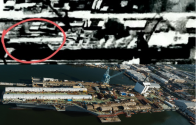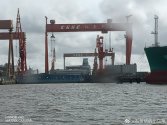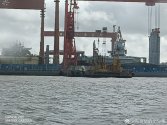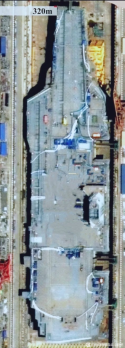To really refute him, you need to provide pictorial evidence for every carrier built by the US to conclude that it’s not “usually” the case. And then we would have to agree at what is meant by “usually”: >50%?
I'd argue the burden of proof is on Richard Santos to substantiate his claim that:
1. Having a shed over the catapult trench = catapult work of any kind of substance is being done, and
2. That having a shed over a catapult trench is an uncommon thing for US carriers when they're under construction, and
3. Even if both 1. and 2. are true, why that would mean 003 has to be launched at a later stage of completion than US carriers, given there's nothing stopping them from initiating some aspects of catapult work while in construction in drydock and to continue it after the ship is launched. ... and lastly,
4. Even assuming 1, 2 and 3 were all true -- if the shipyard really did want to build another major warship in that same drydock sooner rather than later as he speculates in his conclusion, why on earth would they keep 003 in the drydock to do work
inside the drydock if that same work could be done after the ship is launched (like catapult installation, fitting out etc). I mean, if drydock time was the focus, then wouldn't it make sense to launch the ship as early as practically possible as soon as all the work requiring drydock time is finished? After all, the fitting out process of the ship is done with the ship afloat, not requiring the ship to be in drydock.
... Of course all of this is another way of saying that his original post didn't really make sense in the first place, and I think Intrepid was already being quite gracious in humouring him.




